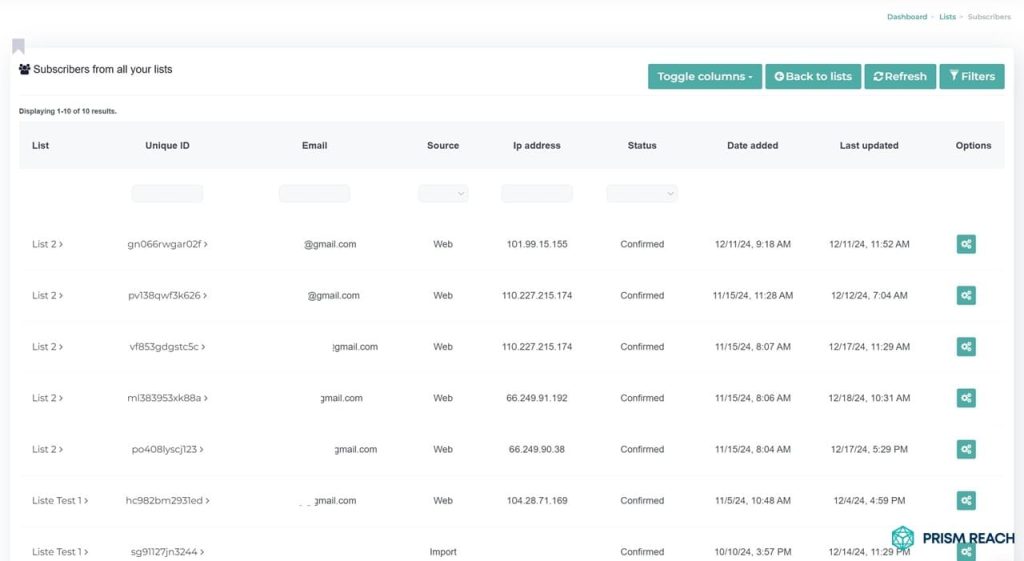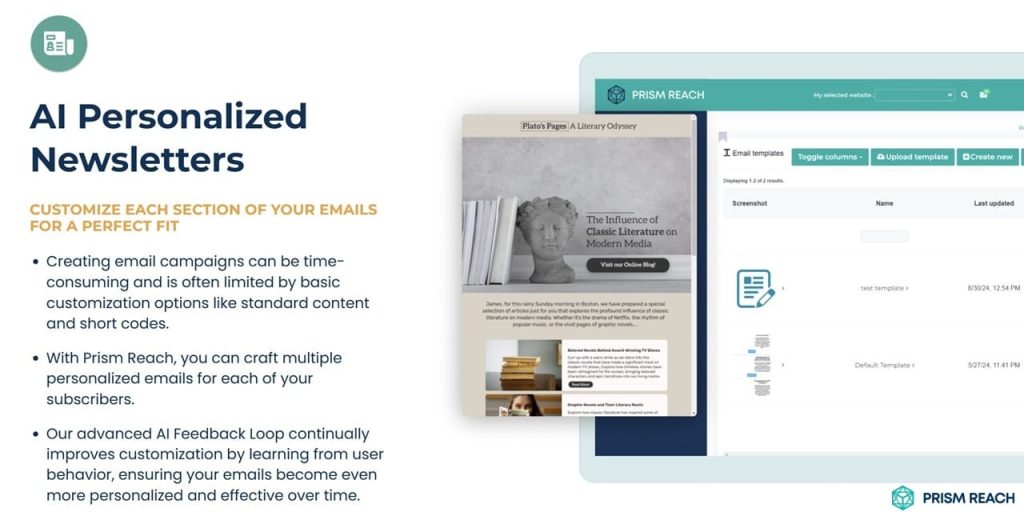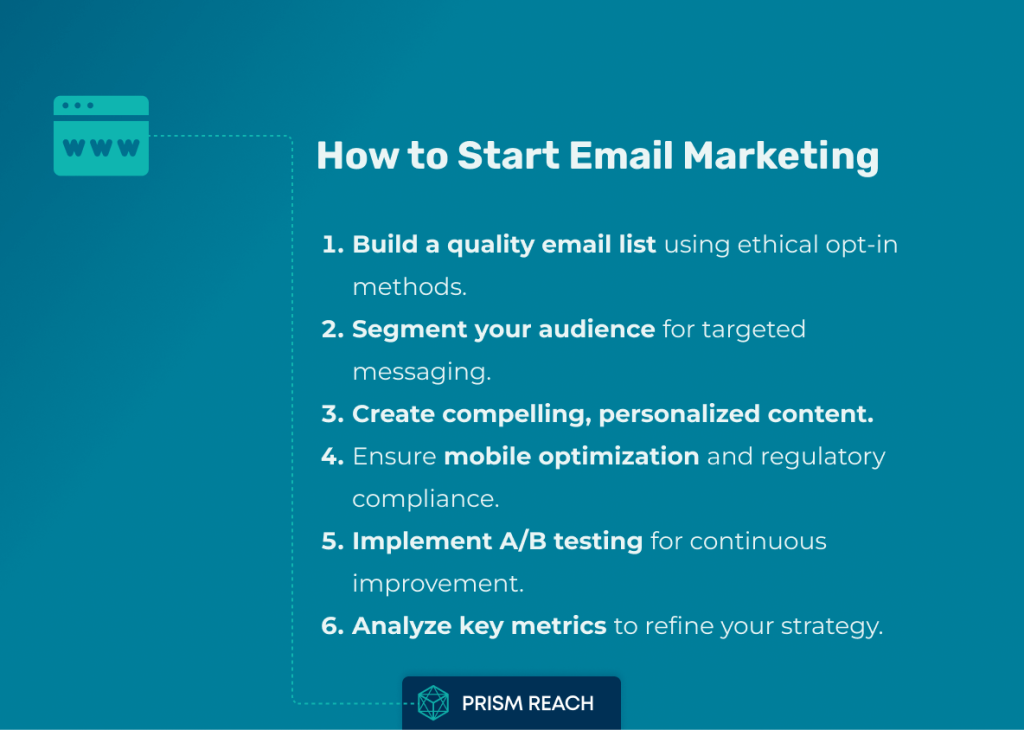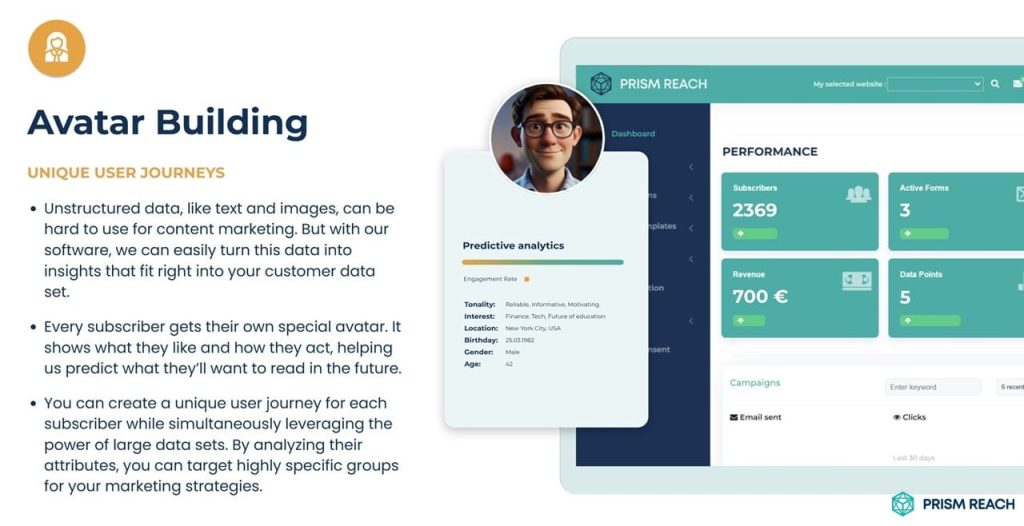Embarking on an email marketing journey can feel like navigating uncharted waters, but with the right strategies and tools, it can become a highly effective channel for engaging your audience and driving conversions. As a seasoned SEO marketing specialist, I’ve witnessed firsthand the transformative power of well-executed email campaigns. They’ve not only boosted engagement but also significantly increased conversions for businesses across various industries.
Today, I’m thrilled to share my insights on how to start email marketing effectively. From building a robust subscriber list to crafting compelling content that resonates with your audience, we’ll explore the key elements that will set you up for success. Along the way, I’ll highlight some common pitfalls to avoid and introduce advanced strategies, including some lesser-known “hidden gems” that can elevate your email marketing game.
Remember, email marketing isn’t just about sending messages; it’s about creating meaningful connections with your audience. It’s a powerful tool that, when wielded correctly, can foster loyalty, drive sales, and establish your brand as a trusted authority in your niche. So, let’s dive in and unlock the potential of this powerful marketing tool together.
Key Facts
- List Building is Crucial: Use ethical opt-in methods to grow your email list effectively and sustainably.
- Personalization Matters: Tailor your content to individual subscribers for higher engagement and conversions.
- Compliance is Non-Negotiable: Adhere to regulations like GDPR and CAN-SPAM to protect your business and build trust.
- High ROI: Email marketing offers one of the highest returns on investment compared to other digital marketing channels.
- Direct Communication: Email allows for direct and personalized communication with your audience.
Upgrade Your Email Marketing with AI Personalization!
Essential Steps to Launch Your Email Marketing Campaign
Building a Quality Email List
A successful email marketing campaign starts with a quality email list. Here’s how to build one from scratch:
- Create Irresistible Lead Magnets: Offer valuable incentives like e-books, webinars, or exclusive discounts to encourage sign-ups.
- Strategically Place Opt-In Forms: Embed opt-in forms on high-traffic pages of your website, such as the homepage, blog posts, and about page.
- Leverage Social Media: Promote your email list on platforms like Facebook, LinkedIn, and Instagram to reach a broader audience.
- Use Exit-Intent Popups: Capture visitors who are about to leave your site with timely popups offering lead magnets.
- Collect Emails Offline: Gather email addresses at networking events, trade shows, and in-person interactions.

Segmenting Your Audience
Segmentation allows you to tailor your messages to specific groups within your audience, increasing relevance and engagement.
- Demographic Segmentation: Divide your list based on age, gender, location, and other demographic factors.
- Behavioral Segmentation: Segment based on user behavior, such as past purchases, website interactions, and email engagement.
- Psychographic Segmentation: Group subscribers based on interests, values, and lifestyle.
- Transactional Segmentation: Target customers based on their purchase history and frequency.
- Engagement Level: Differentiate between highly engaged subscribers and those who are less active.
Crafting Compelling Content
The content of your emails should provide value to your subscribers while aligning with your marketing goals.
- Personalized Content: Use subscriber data to tailor content to individual interests and needs.
- Educational Articles: Share informative content that helps your audience solve problems or learn something new.
- Exclusive Offers: Provide special discounts or early access to products as a reward for being a subscriber.
- Storytelling: Engage your audience with compelling stories that resonate emotionally.
- Clear Call-to-Action (CTA): Each email should have a clear objective, guiding subscribers towards a specific action.
Ensuring Mobile Optimization and Compliance
With over 50% of emails now opened on mobile devices, optimizing your emails for mobile is essential.
- Responsive Design: Use templates that automatically adjust to different screen sizes.
- Short and Concise Content: Mobile readers prefer brief and to-the-point messages.
- Easy-to-Click CTAs: Ensure buttons and links are large enough to be tapped easily on mobile screens.
- Compliance with Regulations: Familiarize yourself with laws like GDPR and CAN-SPAM to avoid penalties and build trust.
- Clear Unsubscribe Options: Make it easy for subscribers to opt-out if they choose, maintaining a positive sender reputation.
Implementing A/B Testing and Analyzing Metrics
Continuous improvement is key to successful email marketing. Implement A/B testing and analyze key metrics to refine your campaigns.
- A/B Test Subject Lines: Experiment with different subject lines to see which ones yield higher open rates.
- Test Email Content: Vary the content, images, and CTAs to determine what resonates best with your audience.
- Analyze Open Rates: Measure how many subscribers open your emails to gauge the effectiveness of your subject lines and send times.
- Track Click-Through Rates (CTR): Monitor how many subscribers click on links within your emails to assess content engagement.
- Evaluate Conversion Rates: Determine how effectively your emails drive desired actions, such as purchases or sign-ups.

Advanced Strategies and Hidden Gems
Behavior-Based Email Triggers
Implementing behavior-based email triggers can significantly enhance the personalization and effectiveness of your campaigns. By creating automated email sequences triggered by specific user actions on your website or app, you can deliver timely and relevant messages that resonate with your audience.
For example, if a user views a particular product category multiple times without making a purchase, you can send a personalized email showcasing related products or offering a special discount. This targeted approach not only increases the likelihood of conversion but also demonstrates that you understand and cater to your subscribers’ interests.
Email Preheader Storytelling
The preheader text is often overlooked, but it plays a crucial role in encouraging recipients to open your emails. By crafting compelling preheader text that continues the story started in your subject line, you can create intrigue and entice subscribers to engage with your content.
For instance, if your subject line is “Unlock Your Exclusive Offer Today,” your preheader could be “Discover the special discount waiting for you inside.” This seamless continuation of the narrative not only grabs attention but also provides additional context that can boost open rates.
Micro-Segmentation
While basic segmentation is effective, micro-segmentation takes personalization to the next level by creating hyper-specific audience segments based on minute details. This could include factors like scroll depth on your website, time spent viewing specific content, or even the type of device used.
By leveraging micro-segmentation, you can deliver highly targeted messages that align closely with each subscriber’s unique behavior and preferences. This granular approach ensures that your content is relevant and engaging, leading to higher engagement rates and better overall campaign performance.
AI-Powered Send Time Optimization
Determining the optimal time to send emails can be challenging, as it varies for each subscriber. AI-powered send time optimization uses algorithms to analyze individual recipient behavior and automatically schedule emails at the best possible time for each subscriber.
This technology maximizes open rates by ensuring that your emails land in your subscribers’ inboxes when they are most likely to engage. By leveraging AI, you can take the guesswork out of timing and enhance the overall effectiveness of your email marketing campaigns.
Dark Mode Email Design
With the increasing popularity of dark mode settings across various devices and email clients, designing emails that automatically adjust for dark mode is essential. Dark mode email design ensures that your emails remain visually appealing and easy to read, regardless of the recipient’s display preferences.
By implementing dark mode-compatible templates, you enhance the user experience and reduce the chances of your emails being dismissed due to poor readability. This attention to design details can set your emails apart and contribute to higher engagement rates.

Prism Reach: Enhancing Your Email Marketing
To effectively implement these strategies and elevate your email marketing efforts, utilizing advanced tools like Prism Reach can be a game-changer. Prism Reach is an innovative AI-powered SaaS solution designed to enhance the effectiveness of email marketing campaigns through deep personalization.
Benefits of Prism Reach
- AI-Powered Personalization: Prism Reach utilizes sophisticated AI algorithms to tailor email content based on subscriber behavior and preferences, ensuring each email is highly relevant.
- Dynamic Content Selection: The platform automatically selects the most pertinent content for each subscriber, increasing engagement and click-through rates.
- Advanced Segmentation and Analytics: Prism Reach offers detailed audience segmentation and insightful analytics, enabling you to optimize your campaigns for maximum impact.
Frequently Asked Questions (FAQ)

Conclusion
Starting email marketing can be a game-changer for your business when done right. By following these strategies and continuously refining your approach, you’ll be well on your way to email marketing success. Remember, it’s a journey of constant learning and adaptation.
As you embark on this journey, don’t be afraid to experiment and learn from both successes and failures. Every audience is unique, and what works for one business may not work for another. The key is to stay focused on providing value to your subscribers and building genuine relationships.
For those looking to take their email marketing to the next level, I highly recommend checking out Prism Reach. Its AI-powered personalization and automation features can significantly enhance your email campaigns, saving time while boosting engagement and conversions. With Prism Reach, you can create hyper-personalized content for each subscriber, leveraging advanced AI technology to deliver the right message at the right time.
The platform’s ability to create detailed user avatars and employ an AI feedback loop for continuous optimization sets it apart from traditional email marketing tools. This level of personalization can lead to higher open rates, click-through rates, and ultimately, better ROI for your email marketing efforts.

Moreover, Prism Reach’s automated campaign creation and delivery features can free up your time to focus on strategy and content creation, rather than getting bogged down in the technical details of sending emails. Its integration capabilities with CRM systems and analytics tools also make it easier to get a holistic view of your marketing efforts.
As you continue to grow and refine your email marketing strategy, tools like Prism Reach can be invaluable in helping you scale your efforts while maintaining the personal touch that makes email marketing so effective. Remember, the goal is to treat each subscriber as an individual, not just a number on your list, and Prism Reach excels at enabling this approach.
So, as you take your first steps into the world of email marketing, keep these tips in mind, stay committed to providing value, and don’t hesitate to leverage advanced tools like Prism Reach to maximize your success.
Sources
- Exploding Topics: Email Marketing Trends
- Toptal: Email Marketing Trends
- HubSpot: Email Marketing Examples
- Medium: How to Start Email Marketing
- Neal Schaffer: How to Start Email Marketing